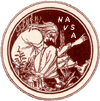History and Cultural
Representations of Human Remains
This series of 3 interdisciplinary conferences will examine
the relationship between anatomical knowledge and practice and their cultural
representations so as to offer an overview of the cultural reception of the
exhibition of human remains. The conferences are aimed at scholars from a
variety of medical humanities.
Medical Museums and Anatomical Collections
Natural History Museum – Toulouse, February 4, 2013
Anatomical Models
Academy of Medicine – Paris, April 4, 2013
Exhibiting Human Remains
Hunterian Museum – London, June 4, 2013
Call for Papers: Exhibiting
Human Remains
Hunterian Museum – London
June 4, 2013
In the nineteenth and early twentieth centuries, the issue
of emotional responses related to the dissection and exhibition of human
remains was increasingly at the heart of debates related to the constitution
(and closing down) of medical museums. This last conference will analyse the
reception of medical museums and their exhibited human remains, focusing more
particularly on the impact of an increasingly fragmented and commodified human
body. The conference will therefore look at the history of and debates around
the exhibition of human remains and how these debates were represented in
literature and the arts. It will investigate the changes in representation,
tracing the evolution from the aestheticized bodies of the Renaissance to the
human remains exhibited in nineteenth-century medical museums, and also explore
how the exhibition of human remains radically changed ideas about the diffusion
of knowledge and the relation between science and nature as well as suggested
new epistemological strategies. Using literature and the arts as significant
media in the popularisation of a new scopic regime (examining, for instance,
literary and artistic representations of embalmed corpses, exhibited skeletons
or bottled specimens), the conference will highlight the way in which the
artistic field often offered a more humanized or ethically more complex version
of the gruesome business of dissection that anatomists and curators were daily
trying to make presentable to their audiences. In this way, the conference will
probe the links between episteme and transgression, and call attention to the
ethical questions that were raised (and still are) by the exhibition (or even
trafficking) of human remains.
We invite 20-minute papers that engage with, but are not
limited to, the following topics :
- the history of the exhibition of human remains in medical essays, journals, manuals of dissection
- the reception of human remains, audiences and gender issues
- the policing of the gaze in medical museums
- audience responses to natural anatomies and artificial models
- the links between human remains and other anatomical tools
- human remains, ethics and medicine
- exhibited human remains and anatomical legislation
- representations of human remains in broadsides, pamphlets, caricatures, advertising and fiction
- representations of the corpse as commodity/anatomical material
- representations of tissue trafficking
- the reception/representation of human remains and the issue of mortality
- the meaning(s) of human remains
- human remains in Gothic/sensation/detective fiction
- representations of anatomists and bodysnatchers in fiction and non-fiction (essays, manuscripts, letters, diaries, etc.)
- stories and testimonies relating supplies of cadavers, the relation between anatomists and grave-robbers, dissection
Please send 300-word proposals (attached as a
.doc-file; in English only), together with a short biographical note to Laurence Talairach-Vielmas (talairac@univ-tlse2.fr) & Rafael
Mandressi (rafael.mandressi@damesme.cnrs.fr).
Please write ‘EXPLORA/Exhibiting Human Remains/Abstract’ as email object. Deadline for submissions: September 1,
2012. Contributors will be notified that their proposal has been accepted
by mid-October 2012.




